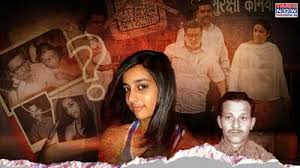The peaceful city of Noida, India, was put on the map for all the wrong reasons in May 2008 when a double murder rocked the nation. Aarushi Talwar, 13, was discovered dead in her bedroom, while the body of the Talwars’ domestic servant Hemraj Banjade was recovered from the terrace a day later. This mishandled, sensationalized and bizarre case still baffles and fascinates the nation.
The Crime Scene
Aarushi Talwar was discovered dead in her bed with her throat slit and a head injury on the morning of May 16, 2008. Hemraj, the family’s live-in domestic help, initially emerged as the suspect but his body too was found a day later on the terrace with similar injuries. Both victims had been struck with some sort of blunt instrument and both had had their throats deliberately and accurately slit. The time the men were killed was believed to have been between midnight and 1 a.m. (BBC, All That’s Interesting)
Investigative Missteps
The first investigation carried out by the Uttar Pradesh police was marred by carelessness. Doch die Spur wurde nicht geschützt – die Spurensicherung war verseucht. The apartment was not secured and many, including members of the media, were able to enter it. Vital forensic evidence was not gathered and the police mishandled fingerprints. Of the 26 fingerprints obtained, only two were usable but they did not lead to any suspects. (The Times of India, Wikipedia)
Theories and Suspects
Parents as Suspects
The attention turned to Aarushi’s parents Dr. Rajesh Talwar and Dr. Nupur Talwar. Finding Aarushi and Hemraj in (an) objectionable position, Rajesh Talwar with the help of Nupur Talwar, committed the double murder,” the Central Bureau of Investigation had theorised. But this was mere speculation, the parents had not been conclusively connected with the killing as yet. (Wikipedia)
Other Suspects
Other individuals, including Krishna Thadarai (a compounder at Rajesh’s clinic), Rajkumar (a domestic help for a family friend), and Vijay Mandal (a driver), were also considered suspects. They underwent narco-analysis tests, but the results were inconclusive, and no charges were filed against them. (Wikipedia)
Legal Proceedings
In 2013, a special CBI court convicted the Talwars of both murders, sentencing them to life imprisonment. The verdict was based on circumstantial evidence, and the case drew widespread criticism for its handling. (The Times of India, BBC)
However, in 2017, the Allahabad High Court acquitted the Talwars, stating that the evidence against them was insufficient and that they could not be held guilty beyond reasonable doubt. The court highlighted the investigative lapses and the failure to establish a clear motive or direct evidence linking the Talwars to the crime. (The Indian Express)
Media Sensationalism
The case received extensive media coverage, often criticized for being speculative and intrusive. The media’s portrayal of the Talwars and the dissemination of unverified information contributed to public opinion being swayed, leading to what many termed a “trial by media.” (Reddit)
Impact on Indian Legal System
The Noida double murder case exposed significant flaws in India’s criminal justice system, including investigative incompetence, reliance on circumstantial evidence, and media influence on legal proceedings. It sparked debates on the need for police reform, better forensic practices, and responsible journalism.
The Noida double murder case of 2008 is still one of India’s sensational and controversial criminal cases. The actual criminal(s) behind the murders has/have not been found which makes the case officially unsolved. The case is a grim reminder about how crucial one becomes about unyielding investigation, the perils of the media trial and the urgency of overhauling the systematisms in the criminal justice system.(Wikipedia)
Frequently Asked Questions (FAQ)
Q1: Who were the victims in the Noida double murder case?
A1: The victims were Aarushi Talwar, a 13-year-old student, and Hemraj Banjade, a 45-year-old domestic help employed by the Talwar family.(Reddit)
Q2: What was the initial theory about the murders?
A2: Initially, Hemraj was suspected of murdering Aarushi, but his own body was discovered the next day, leading to various other theories, including the involvement of Aarushi’s parents.(Wikipedia)
Q3: Were Aarushi’s parents convicted?
A3: Yes, in 2013, both Dr. Rajesh and Dr. Nupur Talwar were convicted and sentenced to life imprisonment. However, they were acquitted in 2017 by the Allahabad High Court due to lack of evidence.(The Indian Express)
Q4: Is the case still unsolved?
A4: Yes, the case remains officially unsolved, with no conclusive evidence pointing to the actual perpetrator(s).
Q5: What impact did the case have on India’s legal system?
A5: The case highlighted significant shortcomings in investigative procedures and raised concerns about media influence on legal proceedings, prompting discussions on the need for reforms in the criminal justice system.